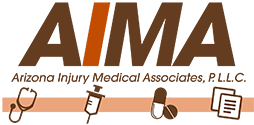by Dr. Demitri Adarmes
Tennis elbow is another name for tendonitis or lateral epicondylitis. It is caused by repetitive movements such as swinging a tennis racket; thus the name. The irritation of repetitive motion causes pain, soreness, and swelling. It’s caused by chronic degenerative changes in the tendon that attaches the forearm muscle to the elbow.
It also occurs from a lot of activities outside of tennis. Such as cleaning, gardening, weight lifting, and more.
The simplest solution for tennis elbow is to stop the repetitive motion that is causing the flare-ups. This of course, is easier said than done. Tennis elbow may be related to a repetitive motion at work such as driving long hours, using a hammer, lifting and sorting, and/or sewing.
Any movement that is done in repetition for long hours can cause this type of inflammation and it is not only found in the elbows. Pain from tendonitis can also be found in the hands, shoulders and knees as well.
There are a number of different things those who suffer from tennis elbow can do to alleviate their pain. Stretching is one of the best things patients can do for their sore and irritated tendons. Before starting work that can irritate tennis elbow take a few minutes to warm up the tendons. Just like muscles, tendons need to be warmed up before being used.
Stretching tight areas also helps keep the tendons from stiffening. Stretch for a few seconds at a time, extending the arms and warming up the joints. If pain is felt throughout the day, take some time to stretch again, getting the tendons to relax and breathe. Stretching throughout the day can rid patients from a  great deal of their pain.
great deal of their pain.
Ice packs are a great therapy for sore elbows. When left uncared for tendonitis stays inflamed and continues to worsen. Ice packs should be applied to the tender area for 20 minutes at a time, several times a day. The ice helps bring down the inflammation and allows the tendons to cool off and repair themselves. Overworked tendons, like muscles, need time to cool off and repair.
Pain relievers like anti-inflammatory medications help knock out an onset of pain. While they are not a cure for the tennis elbow, they help patients deal with the discomfort and continue on with their day. Medications should be taken with a doctor recommendation. They are not a long term fix, especially if the repetitive act is not decreasing. They are a temporary fix for a long term problem.
Physical therapy has been known the help those with tennis elbow. It’s a common misconception that a repetitive task creates strength. Even a patient who repetitively stacks boxes isn’t necessarily stronger because of it; not in the way the need to be to recover from tendon inflammation. Taking demand off of the tendons is the key to getting better. Strengthening the surrounding muscles gives the tendons much needed help functioning. With stronger muscles to take on the work load the tendons can relax and repair.
Bracing for tennis elbow can assist with healing. It’s called counterforce bracing and may  assist in stress reduction to the area.
assist in stress reduction to the area.
Injections can also be extremely beneficial. The first may be steroid injections, which can help reduce the inflammation and result in pain relief. Platelet Rich plasma therapy has been an increasingly popular treatment for tennis elbow due to published studies showing it works well in helping with pain relief and avoiding surgery.
All of these remedies have been known to be very beneficial, but none the less, doctors recommend avoiding the activity that is causing the irritation in the first place.






Leave A Comment